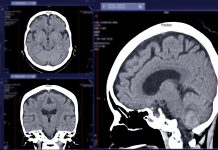A new University of Manchester study finds that analysing skin sebum via non-invasive swabs can identify Parkinson’s biomarkers up to seven years before motor symptoms emerge, offering hope for earlier detection and intervention
A new study from the University of Manchester suggests that simple skin swabs could detect Parkinson’s disease up to seven years before symptoms appear. By analysing changes in sebum, the oily substance on the skin, researchers have identified early biochemical markers that may pave the way for earlier diagnosis and intervention in this progressive neurological condition.
The research is detailed in the journal npj Parkinson’s Disease.
Key biomarkers for identifying early-stage Parkinson’s
The researchers used a technique called Thermal Desorption-Gas Chromatography-Mass Spectrometry (TD-GC-MS) to analyse skin swabs from participants with Parkinson’s, healthy volunteers, and those with a sleep disorder called isolated REM Sleep Behaviour Disorder (iRBD) — a known early warning sign of Parkinson’s disease.
The study involved more than 80 participants, including 46 individuals with Parkinson’s disease, 28 healthy controls, and nine with iRBD. They identified 55 significant features in the sebum that varied between the groups. Those with iRBD often showed levels that fell between those of the healthy controls and the Parkinson’s group, reinforcing the possibility of detecting the disease in its early phase.
The results showed that people with iRBD had distinct chemical profiles in their sebum that were different from those of healthy individuals, but not yet as pronounced as those with established Parkinson’s disease. This supports the idea that Parkinson’s disease leaves a detectable trace on the body well before physical symptoms appear.
Professor Perdita Barran, Professor of Mass Spectrometry at The University of Manchester, said: “This is the first study to demonstrate a molecular diagnostic method for Parkinson’s disease at the prodromal or early stage. It brings us one step closer to a future where a simple, non-invasive skin swab could help identify people at risk before symptoms arise, allowing for earlier intervention and improved outcomes.”
Bringing sebum testing to real-world clinical settings
Sebum is easy to collect using gauze swabs from the face or upper back, making it ideal for non-invasive routine screening and regular monitoring. Previous research by the team has also shown it does not need to be stored in the same cold conditions as other biofluids, such as blood, reducing associated costs.
The research took inspiration from the observations of Joy Milne, who detected a unique scent in individuals with Parkinson’s disease, prompting researchers to explore sebum as a source of diagnostic biomarkers.
By using mass spectrometry, which measures the weight of molecules, the researchers found that there are distinctive Parkinson’s markers in sebum, which led to the development of the test. The researchers are now planning to develop and improve the sebum-based testing to use as a practical tool in real-world clinical settings eventually.
Dr Drupad Trivedi, Lecturer in Analytical Measurement Sciences at The University of Manchester, said: “Our goal is to develop a reliable, non-invasive test that helps doctors detect Parkinson’s earlier, track its progression, and ultimately improve patient outcomes.
“We’re also keen to hear from other hyperosmic individuals, potential ‘super smellers’ like Joy, whose remarkable sense of smell could help extend our work to detect other diseases with potential odour signatures.”








